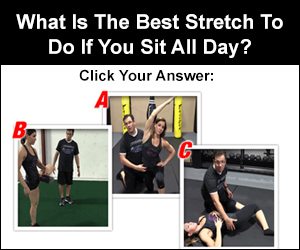Foam rolling has become an essential tool for athletes, fitness enthusiasts, and individuals seeking to improve their overall physical well-being. This simple yet effective self-massage technique uses a cylindrical foam device to apply pressure to tight muscles and connective tissues. Foam rolling helps release muscle tension, improve flexibility, and enhance recovery after intense physical activity.

By incorporating foam rolling into your fitness routine, you can experience reduced muscle soreness, increased range of motion, and improved circulation. This practice can benefit people of all fitness levels, from beginners to professional athletes. Whether you’re looking to alleviate post-workout discomfort or improve your overall mobility, foam rolling offers a versatile and accessible solution.
Key Takeaways
- Foam rolling releases muscle tension and improves flexibility
- Regular use can reduce soreness and enhance recovery after workouts
- Proper technique and consistency are crucial for optimal results
Benefits of Foam Rolling
Foam rolling offers several key advantages for muscle health and physical performance. This self-massage technique can be easily incorporated into fitness routines to support recovery and enhance overall well-being.
Enhanced Muscle Recovery
Foam rolling helps reduce muscle soreness and speeds up recovery after intense workouts. It breaks up adhesions in muscle tissue, promoting faster healing. Many athletes use foam rollers to alleviate delayed onset muscle soreness (DOMS).
The pressure applied during rolling stimulates blood flow to tired muscles. This increased circulation helps remove metabolic waste products that accumulate during exercise. As a result, muscles recover more quickly, allowing for more frequent and effective training sessions.
Foam rolling also helps reduce inflammation in overworked muscles. By targeting specific areas of tightness or discomfort, users can experience relief from aches and pains associated with rigorous physical activity.
Improved Flexibility and Range of Motion
Regular foam rolling can significantly enhance flexibility and range of motion. It loosens tight muscles and fascia, the connective tissue surrounding muscles. This increased pliability allows for greater ease of movement during exercises and daily activities.
By targeting problem areas, foam rolling helps break down scar tissue and knots in muscles. This process can lead to improved posture and reduced risk of injury during physical activities. Many users report feeling more limber and agile after consistent foam rolling sessions.
Foam rolling before workouts can serve as an effective warm-up technique. It prepares muscles for activity by increasing their elasticity and reducing stiffness.
Increased Circulation and Blood Flow
Foam rolling promotes better blood circulation throughout the body. The pressure applied during rolling helps dilate blood vessels, allowing for improved oxygen and nutrient delivery to muscles and tissues.
Enhanced blood flow can lead to faster healing of minor muscle injuries. It also helps remove toxins and waste products more efficiently, contributing to overall muscle health.
Improved circulation from foam rolling may result in reduced muscle tension and a greater sense of relaxation. This can be particularly beneficial for individuals who experience muscle tightness due to prolonged sitting or repetitive motions.
Selecting the Right Foam Roller
Choosing an appropriate foam roller involves considering density, size, texture, and shape. These factors impact the effectiveness and comfort of your rolling routine.
Understanding Density and Size
Foam roller density affects the intensity of muscle release. Softer rollers provide gentle pressure, ideal for beginners or sensitive areas. Firmer rollers offer deeper tissue massage, suitable for experienced users or larger muscle groups.
Size matters when selecting a foam roller. Standard rollers are 36 inches long, accommodating most body parts. Shorter 18-inch rollers work well for targeted areas and travel. Diameter varies from 3 to 6 inches, with larger diameters offering more stability.
Consider your body size and intended use when choosing roller dimensions. Larger individuals may prefer wider rollers for better support.
Texture and Shape Variations
Foam rollers come in smooth and textured surfaces. Smooth rollers provide uniform pressure and are gentler on muscles. Textured rollers have ridges or knobs that mimic fingertips, targeting specific trigger points.
Grid-patterned rollers offer varied pressure intensities across the surface. These can be beneficial for addressing different muscle depths simultaneously.
Shape also plays a role in foam roller selection. Cylindrical rollers are versatile for most body parts. Half-round rollers provide stability for balance exercises. Contoured rollers with curves can help target hard-to-reach areas like the spine or IT band.
Foam Rolling Techniques
Proper foam rolling techniques can maximize benefits and minimize discomfort. Key aspects include targeting specific muscle groups, managing pressure, and avoiding common mistakes.
Targeting Major Muscle Groups
Focus on large muscle groups like the quadriceps, hamstrings, and back muscles. Place the foam roller under the target area and slowly roll back and forth. Pause on tight spots or trigger points for 20-30 seconds.
For the quadriceps, lie face down with the roller under the thighs. Use your arms to move your body, rolling from hip to knee.
To target hamstrings, sit with the roller under your thighs. Lift your hips and roll from the base of your buttocks to just above the knees.
For the back, lie with the roller perpendicular to your spine. Cross your arms over your chest and roll from your lower back to your upper back.
Managing Pressure and Discomfort
Control pressure by adjusting body weight on the roller. Start with light pressure and gradually increase as muscles adapt. Use your arms and legs to support some of your weight if needed.
Expect some discomfort, especially when addressing tight muscles or trigger points. This sensation should feel like a “good pain” – intense but not sharp or unbearable.
Breathe deeply and try to relax into the pressure. This helps release tension and promotes muscle relaxation. If pain becomes too intense, reduce pressure or move to a less sensitive area.
Avoiding Common Mistakes
Don’t roll directly over joints or bones. This can cause pain and potential injury. Focus on the muscle belly and avoid bony areas.
Avoid rolling too quickly. Slow, controlled movements allow for better pressure management and muscle release. Aim for a pace of about one inch per second.
Don’t spend too much time on one area. Limit rolling on a specific spot to 20-30 seconds to prevent bruising or tissue damage.
Maintain proper form throughout the session. Keep your core engaged and body aligned to target muscles effectively and prevent strain.
Avoid rolling an injured area without professional guidance. Consult a healthcare provider or physical therapist for advice on foam rolling with injuries.
Foam Rolling Exercises for Key Areas
Foam rolling targets specific muscle groups to relieve tension and improve flexibility. The following exercises focus on key areas of the body to maximize the benefits of self-myofascial release.
Upper Body Focus
Start with the upper back by lying on the roller perpendicular to your spine. Slowly roll from the middle back to the shoulders, pausing on tight spots. For the lats, lie on your side with the roller under your armpit. Roll down to your waist, applying pressure as needed.
To target the chest, lie face down with the roller under one pectoral muscle. Roll from the armpit to the center of the chest. Repeat on the other side.
For shoulder relief, place the roller under one arm while lying on your side. Slowly roll from the armpit to the elbow, focusing on any tender areas.
Lower Body Emphasis
Address quad tension by lying face down with the roller under your thighs. Roll from hip to knee, pausing on tight spots. For hamstrings, sit on the roller with legs extended. Use your arms to lift your hips and roll from the sit bones to just above the knees.
Target calf muscles by sitting with the roller under your lower legs. Cross one leg over the other to increase pressure. Roll from the ankles to just below the knees.
For glute relief, sit on the roller with one leg crossed over the other knee. Lean slightly towards the side being rolled and move back and forth over the glute muscle.
Core and Back Specialization
To address the lower back, lie with the roller perpendicular to your spine at the bottom of your rib cage. Slowly roll down to your tailbone, being careful not to roll directly on the spine.
For core work, lie face down with the roller under your abdomen. Roll from just below the rib cage to your hip bones. This can help relieve tension in the abdominal muscles.
Target the neck by lying on your back with the roller at the base of your skull. Gently nod your head, allowing the roller to massage the neck muscles. Move slowly and with caution in this sensitive area.
Incorporating Foam Rolling into Your Routine
Foam rolling can be integrated into various stages of your fitness routine to enhance performance and recovery. Strategic use before and after workouts, as well as maintaining consistency, can maximize its benefits.
Pre-Workout Warmup Strategies
Foam rolling before workouts primes muscles for activity. Spend 5-10 minutes targeting major muscle groups like quads, hamstrings, and calves. Roll each area for 30-60 seconds.
This practice increases blood flow and tissue elasticity. It can help correct muscle imbalances and improve range of motion.
Combine foam rolling with dynamic stretches for a comprehensive warm-up. This combination prepares the body for exercise more effectively than static stretching alone.
Post-Workout Recovery Techniques
After exercise, foam rolling aids in muscle recovery and reduces soreness. Focus on areas that were heavily used during the workout.
Roll slowly over tight spots, holding for 20-30 seconds when you find a tender area. This helps release tension and promotes faster recovery.
For best results, foam roll within 30 minutes of finishing your workout. Follow up with light static stretching to further enhance flexibility.
Consistency and Frequency
Regular foam rolling yields the best results. Aim to incorporate it into your routine 3-5 times per week.
Even on rest days, a short foam rolling session can improve posture and alleviate muscle tension from daily activities.
Start with 5-10 minutes per session and gradually increase duration as you become more comfortable with the technique.
Consistency is key. Make foam rolling a habit by pairing it with existing routines, such as rolling while watching TV or before bed.

